In this review about the ASUS RT-AX56U, we’re going to go more about the router’s features and hardware. We wanted to test the new Wi-Fi 6 or 802.11ax technology but was unable to procure the equipment necessary for it due to the on-going lockdown. This sadly restricts us to testing with 802.11ac devices. However, we might revisit this review in the near future once things have settled down.
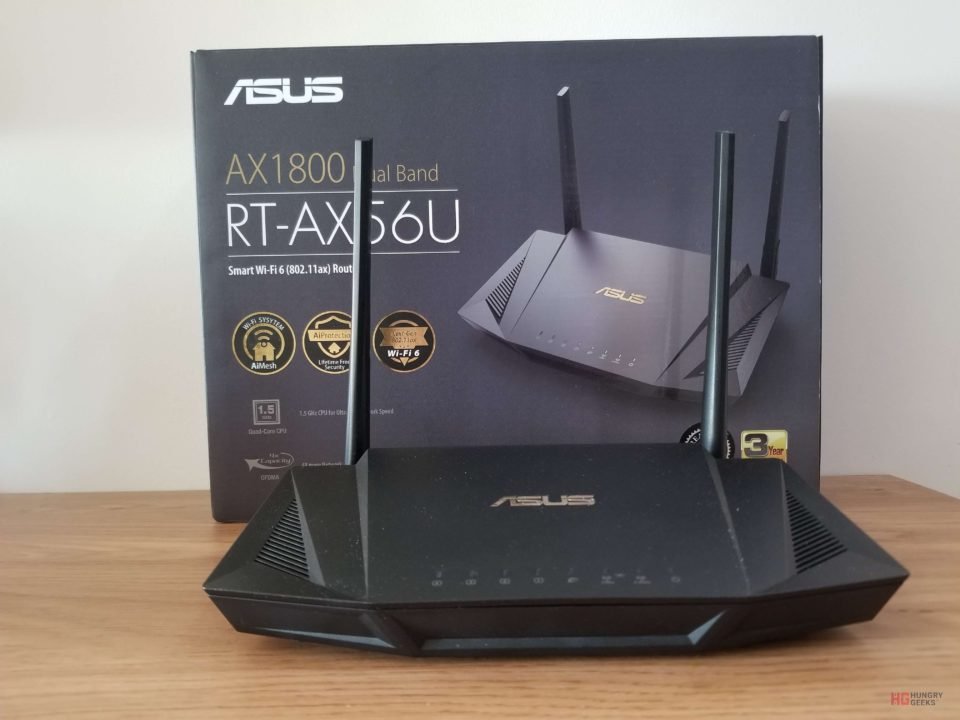
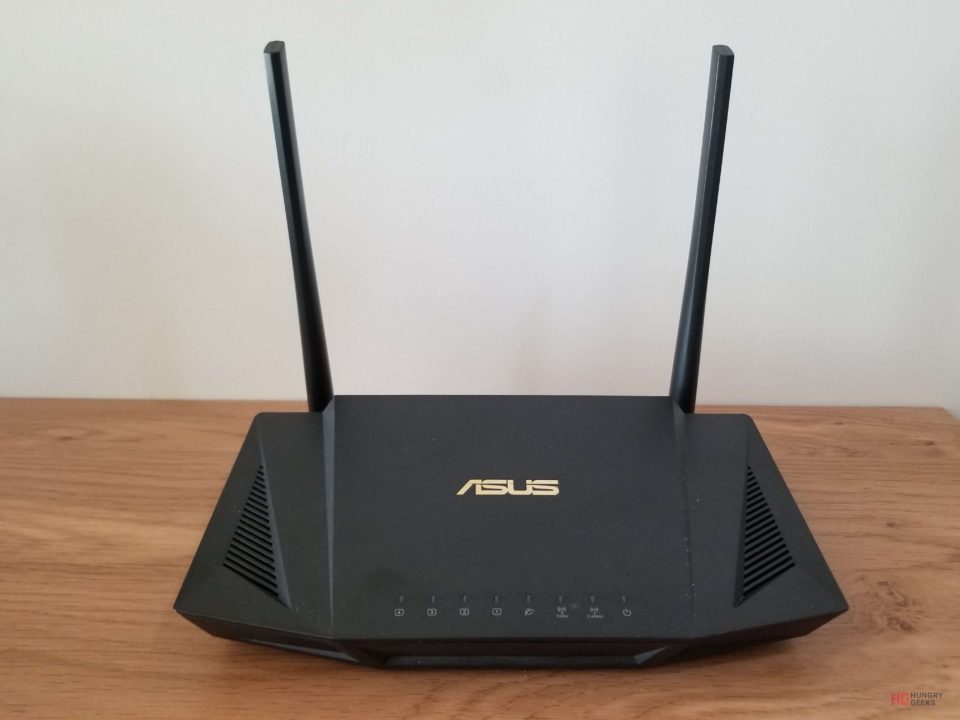

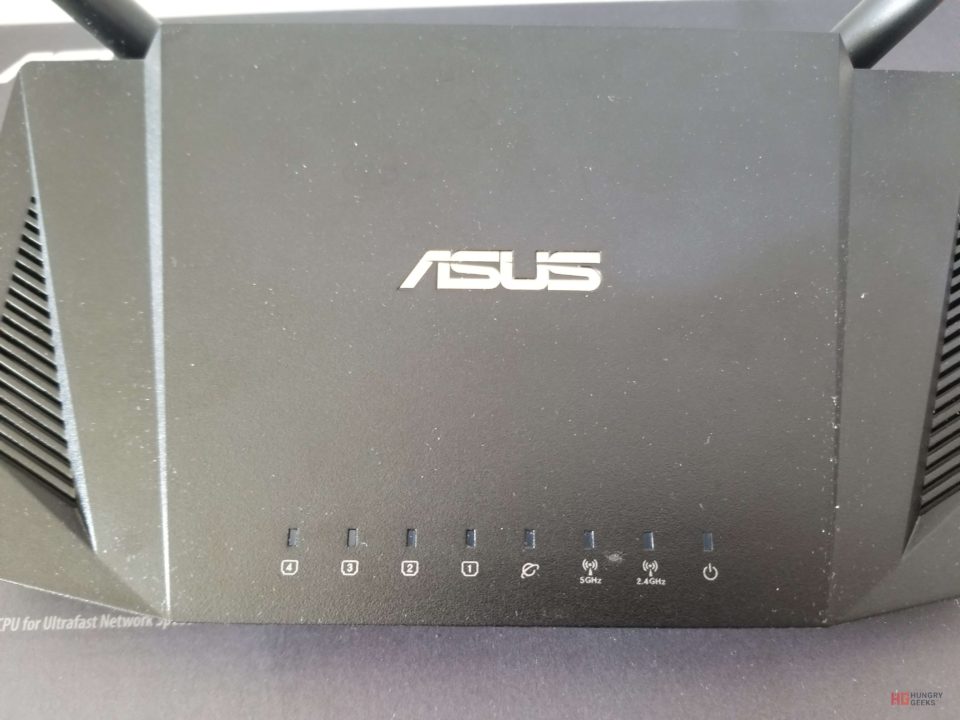

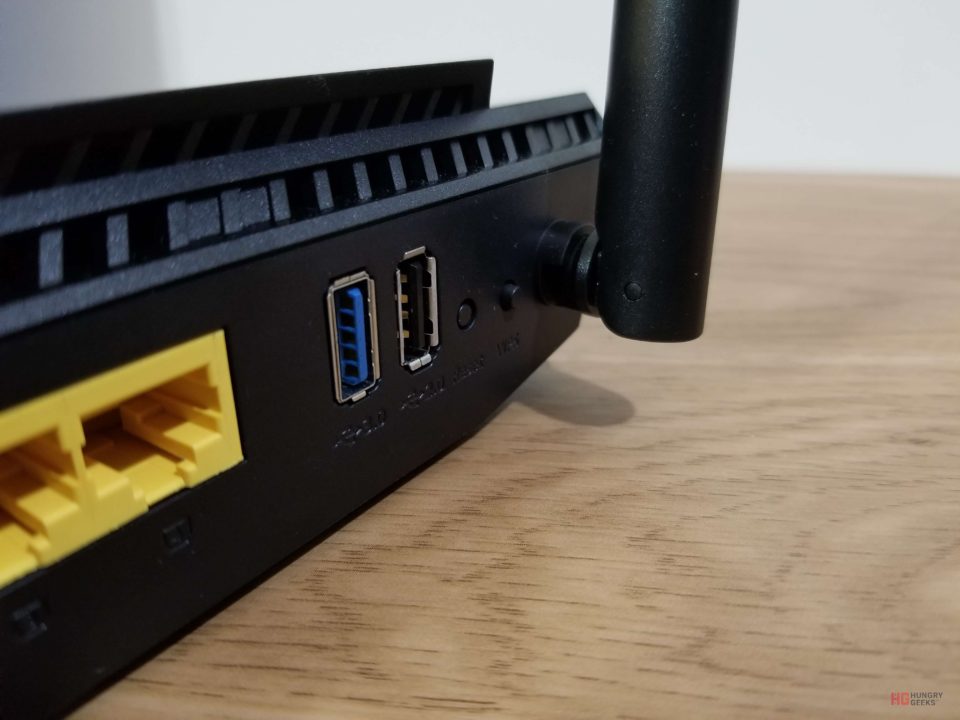
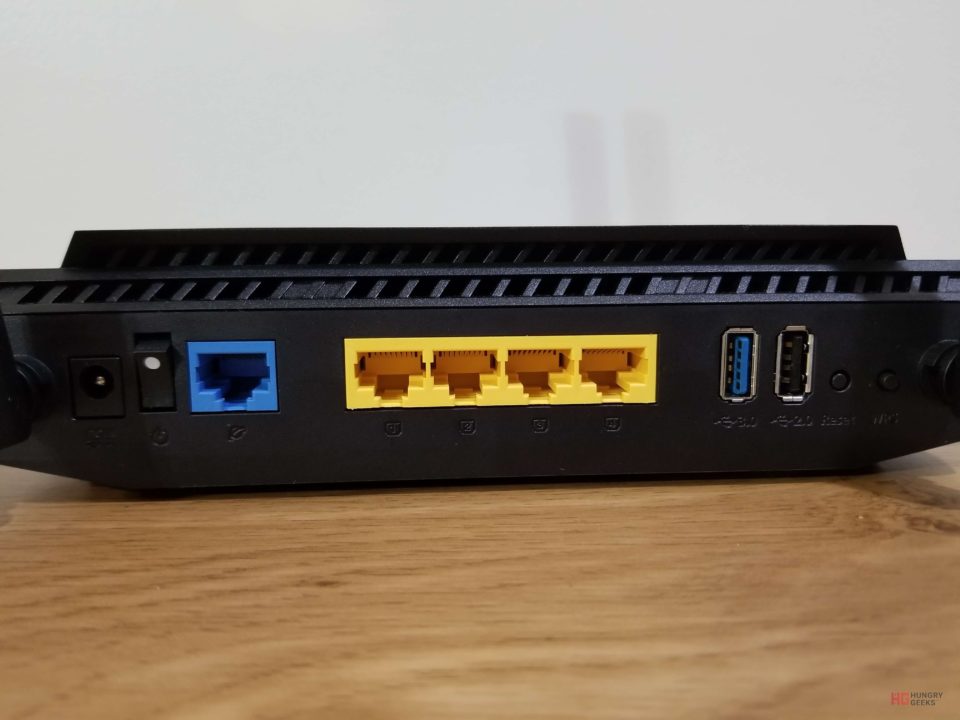
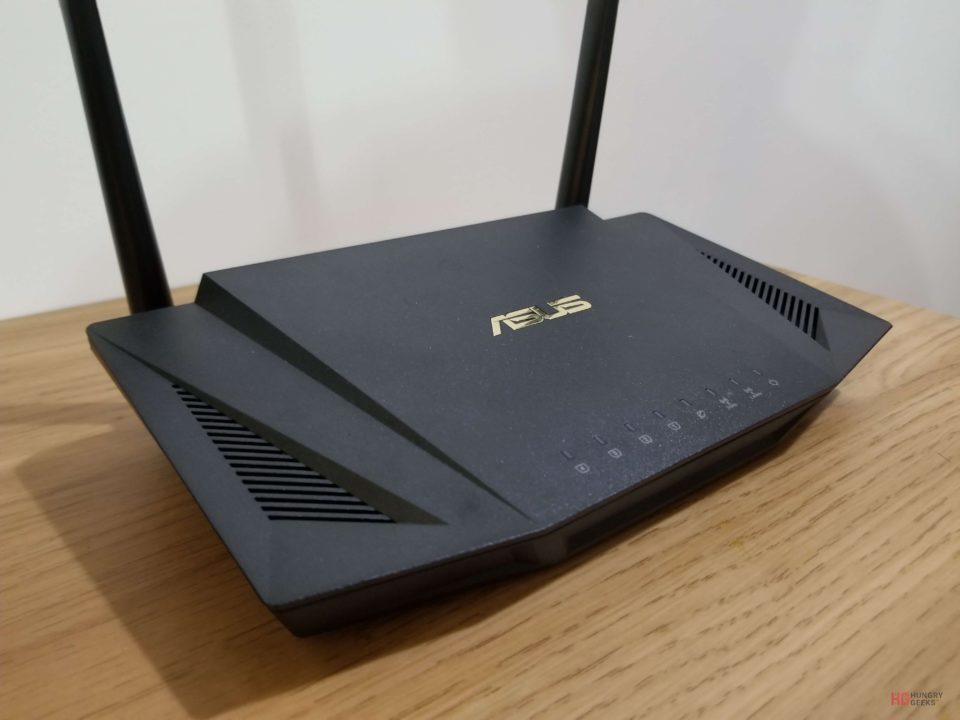

A typical 2×2 ASUS Router, the RT-AX56U sports the distinct ASUS design, being black, edgy, reminiscent of elementary school’s scalene triangles and trapezoid. It is equipped with 4 RJ45 ports for LAN and 1 for WAN. It also comes with 2 USB ports, 1 USB 2.0 and another USB 3.1 Gen 1. The front side houses a group of LEDs that indicate the router’s processes: 1 for power, 4 for LAN, 2 for Wi-Fi.
The whole package comes with an adapter and an RJ-45 cable.
As stated at the start of this article, we weren’t able to secure a receiver or any new 802.11ax compatible device due to the quarantine. But allow us to show you the performance of the router with 802.11ac speeds.
For the wireless speeds, we used the a light program called iperf3 to measure the communication speeds between two connected devices. The test can be used in either wireless or wired settings.
| RT-AX56U | Device 1 (Client) | Device 2 (Host) | Average Speed |
| Test 1 | Smartphone | PC (Wired) | 267 Mbit/s |
| Test 2 | Macbook (Wireless) | PC (Wired) | 269 Mbit/s |
| Test 3 | Macbook (Wired) | PC (Wired) | 949 Mbits/s |
| Test 4 | Smartphone | Macbook (Wireless) | 255 Mbits/s |
| Test 5 | PC (Wired) | Smartphone | 250 Mbit/s |
The speeds shown above were taken from a distance of between a meter and 3 meters from the router. The wired tests were done with Cat-5e cables.
ASUS Routers, for the past 5 or so years, have always been packed with useful features. It was kind of ignored for half a decade as the internet speeds here in the Philippines are not good enough to take advantage of them. But with the current internet infrastructure “somewhat” catching up to modern standards, it’s safe to say that ASUS Routers’ features are now practically usable.
We’re talking about features that are directly linked to the built-in USB Ports. We’re talking about the ability to build your own media server and cloud.
The Ai Cloud is ASUS cloud system that allows you to access and transfer your files from virtually anywhere (as long as you have internet). You can simply make a personal cloud storage by simply attaching a hefty USB drive to the RT-AX56U. Do the easy setup, get a url from ASUS, and voila! You have your own cloud.
The advantages of this one are innumerable in today’s circumstances. People can easily share files, be it with families or for work, without paying for expensive cloud services. Especially since we’re stuck because of the quarantine, small offices can benefit from this as workers can just access and place shared files in the private cloud.
The only bottlenecks here are that the router must be more than capable (discussed below) and your bi-directional internet speeds.
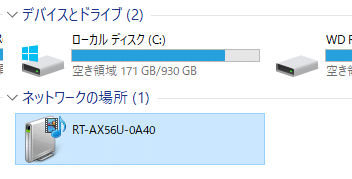
Aside from having your own cloud, you can designate your USB storage as a media server. This allows users in your network to access it for movies, music, and pictures. You can also have it store important documents and files.
If you still own a non-wireless printer, having it connected here with a USB cable can turn it into a wireless printer. Nice upgrade, eh.
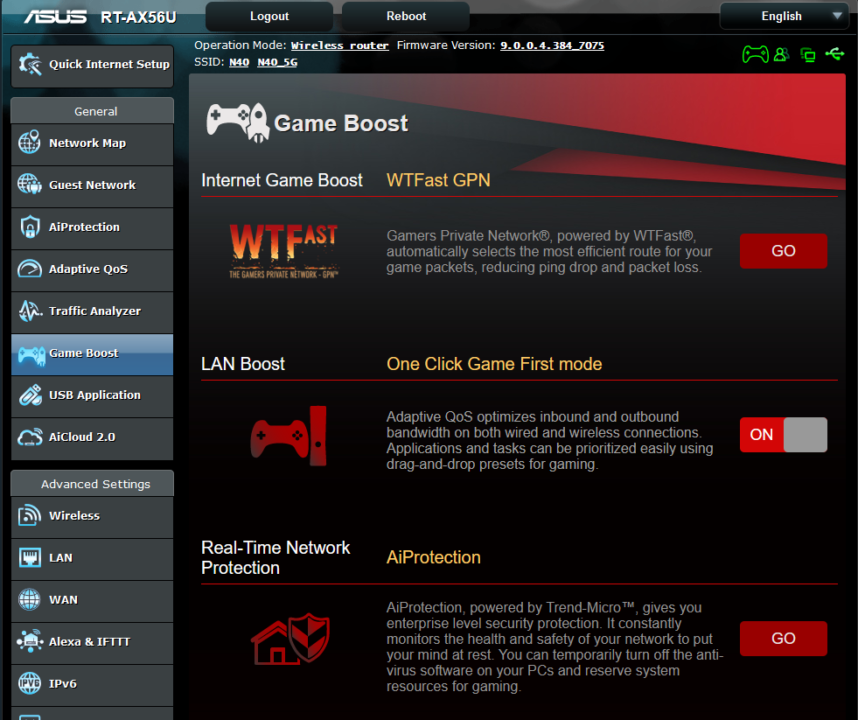
The RT-AX56U also boasts Game Boost, offering users a plethora of functions that can improve gaming connections between the servers. ASUS routers, including this one, also have the added bonus of being able to directly handle WTFast within its own system.

Also connected to this feature is the built-in QoS system. QoS or Quality of Service allows users to modify how the network behaves and prioritizes packets. If you’re into gaming, you can set it to prioritize gaming packets first rather than the default video packets. You can either set it to adaptive (automatic) or manually configure it to your own liking. What’s good about how ASUS implemented this is it’s easy to understand. People lacking the technical know-how on how QoS works can simply use the UI to manage the priorities of their network.
Among the other features that the ASUS RT-AX56U has, the Ai Protection is something you should consider taking a look at. Partnering with data security company, Trend Micro, ASUS implemented a system that would block malicious sites and potentially harmful files from entering your systems. It also claims to prevent sensitive files from leaving your network.

What we did find cool about this feature is that it tells you possible cracks and vulnerabilities in your network. It also helps that the easy to read assessment tells you more about what you can do for security.
The RT-AX56U also comes with the ASUS AiMesh system. This allows it to communicate with multiple ASUS routers to share information and settings. This means that users can simply move around an area without having to tinker with their Wi-Fi settings as they will be automatically handed over to the neighboring router. AiMesh finds usefulness in large areas such as wide offices, spacious halls, or large houses.
One thing that sets the RT-AX56U apart from others is its hardware. It is powered with a 1.5GHz quad-core processor with 256MB Flash and 512MB RAM. The more than capable router does its job of throwing your packets to and fro, while also allowing you access to the router’s features without sacrificing speed.
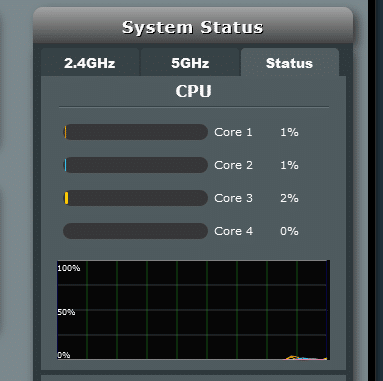
For testing stability and core processes, we tried using 6 devices at the same time: a PC, a PS4, Switch, a tablet, a smartphone, a Mac. While not an accurate representation of a small office, it does simulate the setting of a small household. The tests, even when using all devices at the same time, transmitting and connecting to the internet, fail to severely impact the ASUS RT-AX56U’s performance (which is to be expected). It is safe to assume that RT-AX56U can be more maximized if used in small office settings as the multiple cores and on-board RAM can readily handle more terminals.
You might ask, “why do I need a quad-core processor?” In this instance, the RT-AX56U’s ample feature set requires it to have the quad-core processor. See, like your PC or smartphone, having too many processes and tasks can muddle the overall performance of the router. In this case, the RT-AX56U’s features like the personal cloud server, adaptive QoS, Game Boost, Alexa & IFTT, and Firewall all take up a huge chunk of its processing capabilities when run at the same time.
Although most of the features mentioned above can be found in cheaper routers, it probably won’t be at the same performance as manufacturers would have to sacrifice certain parts as compromise. Usually it’s the processor that gets the boot. If bogged down by processes, your single or dual-core router may fail to give you the speeds that you want or need. For cheaper routers, if the load becomes too high, even loading the admin page can take time.
In a way, same as with phones and computers, having multiple cores certainly helps the performance and reliability of a device. More so if you you want to access more functions like the ones in the RT-AX56U.

While we haven’t tested the 802.11ax capabilities of this router, we did find it to be a very capable device. The hardware and the feature sets provide a decent balance to the experience, neither being too much nor too little.
The features themselves find usefulness in everyday tasks. With a decent USB storage drive, having to access your files without doing any computer magic is a godsend. You can even build your own make-shift NAS with this kind of setup!
We did find it hard running some of its features. For one, the “Keyword Filter” didn’t work when tried. It just caused the processor to spike and block ALL of the pages that we visited. However, the URL filter did work, allowing us to block some nefarious pages. The good thing about this is that for fixing features, a simple firmware update in the future can do the trick.
The quad-core processor allows it to steadily work with the tools that it has. Before, during the 802.11n to 802.11ac transition, ASUS routers already had some of the features that the ASUS RT-AX56U has. But the main difference is that during those times, dual-core routers were considered luxury and single-core ones were the base. So, back then, you were stuck with feature-rich routers that would hang on you once the going got tough. This one simply proves that the quad-core processor works better, performs faster, and is more stable.
To summarize, the RT-AX56U is perfectly balanced, as everything, even a router, should be. We do plan on revisiting this review once things have settled down, so stay tuned!
The ASUS RT-AX56U will be available in the Philippines this May 2020 for PhP 6,700.
Check out our review of the TUF AX3000 or ASUS RT-AX53U for alternatives!
